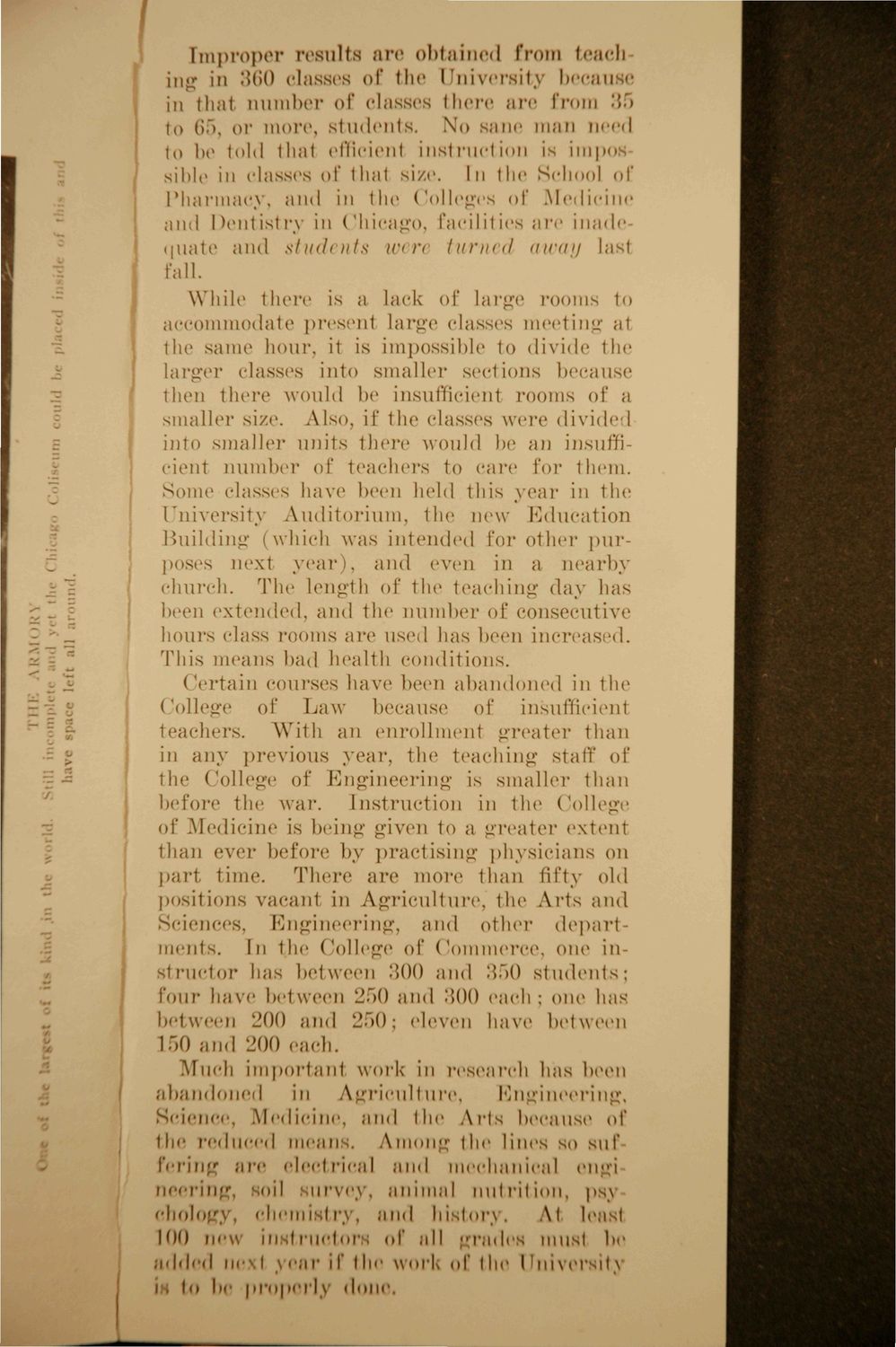| |
| |
Caption: Booklet - Our University (1919)
This is a reduced-resolution page image for fast online browsing.

EXTRACTED TEXT FROM PAGE:
[mproper results arc obtained Prom teach ing in 360 classes of the University because in that number of classes there ar from 3 to 65, ov more, students. No sane man need to l>c told thai efficient instruction is impon sible in classes of thai size. In the School of Pharmacy, and in the Colleges of Medicine and Dentistry in Chicago, facilities are inad< quate and students wen turned away lasl fall. While there is a lack of large rooms to accommodate presenl large classes meeting al the same hour, it is impossible to divide the larger classes into smaller sections because then there would be insufficient rooms of a smaller size. Also, if the classes were divided into smaller units there would be an insufficient number of teachers to care for them. Some classes have been held this year in tie University Auditorium, the new Education Building (which was intended for other purposes next year), and even in a nearby church. The length of the teaching day has been extended, and the number of consecutive hours (dass rooms are used has been increased. This means had health conditions. ( rtain courses have been abandoned in tic College of Law because of insufficient teachers. With an enrollment greater than in any previous year, the teaching staff of the College of Engineering is smaller than before the Avar. Instruction in the College of Medicine is being given to a greater extent than ever before by practising physicians on part time. There are more than fifty old positions vacant in Agriculture, the Arts and Sciences, Engineering, and other departments. In the College of Commerce, one instructor has between M O and 350 students; O four have between 250 and 300 each; one has between 200 and 250; eleven have between 150 and 200 each. .Much important work in research has been abandoned in Agriculture, Engineering, ScienCi Medicine, and Hie Arts because of the reduced means. Among the lines so Buffering are electrical and mechanical cngi ic'-riii,"-, soil survey, animal nulrilion, ps\ holt v, chemistry, and history, Al least 100 new in fnidni of ;dl graded musl be added in j \ ir if the wi.ri, of the IFniversit} i . |,(| l>' pro] i I v done.
| |